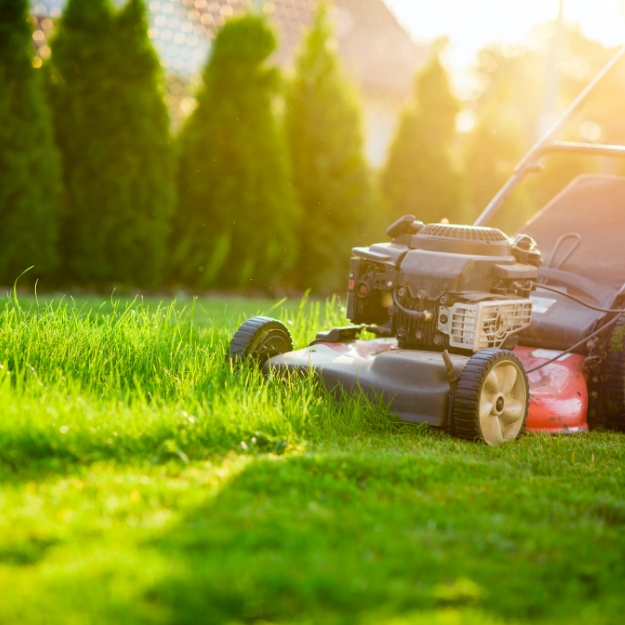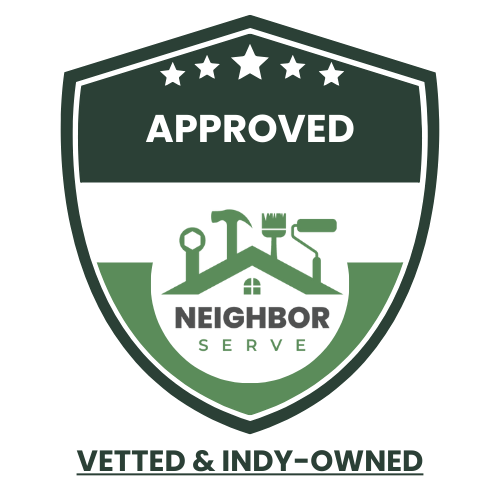How Often Should You Mow Your Lawn in Carmel, IN

Keeping your lawn vibrant during early summer starts with a solid lawn mowing schedule in Carmel IN. Local homeowners often underestimate how crucial timing, grass height, and consistency are for healthy turf. In this blog, we’ll share exactly when and how to mow your Carmel lawn for lasting curb appeal.
Well, there is no one-size-fits-all solution, as several factors influence mowing frequency. Early summer in Carmel, IN, not only brings fluctuating weather but also causes rapid grass growth. Therefore, determining the exact mowing frequency can be challenging due to unpredictable weather conditions.
Understanding Grass Growth in Early Summer
In early summer, lawns in Carmel, IN, experience a growth surge compared to other months due to longer daylight hours and heavy rainfall. That’s why cool-season grasses, such as perennial ryegrass, fine fescue, and Kentucky bluegrass, bloom and flourish faster during this period.
Typically, grass grows faster in the spring and early summer, and slows down as the summer heat intensifies. The growing grass requires persistent mowing and cleaning more than once a week to maintain the lawn’s health.
To reduce active grass growth, the ideal practice is to avoid cutting more than one-third of the grass blade height at a time, providing enough room for healthy root development.
How Often Should You Mow Your Grass?
The general rule of thumb is to mow your lawn every 5-7 days in early summer. However, other factors, including weather, grass type, and mowing height preference, can determine the exact frequency. If there is consistent warm weather or heavy rainfall, consider mowing more frequently (twice a week, for example).
The goal is not to cut your lawn too short, as it weakens the grass and leads to burned spots. On the contrary, allowing it to grow too long invites mold and pests, and gives the lawn an unappealing appearance.
It’s suggested to keep your mowing height between 2.5 and 3.5 inches for most cool-season grass. Remember, mowing or cutting grass shorter isn’t the only goal; your lawn must also look visually appealing.
Why an Early Summer Lawn Mowing Schedule Matters in Carmel IN
Highlighting some of the remarkable benefits of regular mowing.
Healthier Turf: Regular mowing reduces weed production and promotes denser grass growth.
Visual Appearance: A well-trimmed lawn enhances your property’s value by making it visually appealing.
Stronger Roots: Mowing encourages thicker root development, allowing plants to retain moisture more effectively during the peak summer months.
Common Mowing Mistakes to Avoid
Early summer requires regular mowing. But here are some common mowing mistakes to avoid for a pleasing experience.
Cutting Grass Too Short: Scalping your lawn may save time, but the key drawback is that it damages the grass and exposes soil to direct sun and weeds.
Using Dull Blades: Start mowing with sharp blades. Dull blades don’t cut the grass; they just tear it.
Mowing a Wet Lawn: Avoid mowing your lawn immediately after it rains. Wet grass clumps, clogs the mower, causing an uneven cut.
Inconsistent Mowing: Failing to follow a consistent mowing schedule and skipping it during peak seasons can result in overly tall grass and brown patches after cutting.
Adjusting Early Summer Lawn Mowing Strategy in Carmel, IN
As summer approaches, your lawn’s needs may shift as well. Grass may require less mowing due to dry spells and extreme heat. It is recommended to adjust your mowing schedule based on your irrigation system and rainfall patterns.
- Mow every 4-5 days during cooler, rainy weeks.
- Mow every 7-9 days or even less frequently during drought conditions or hotter weeks.
Pro Tip: You can use grasscycling to your advantage by leaving grass clippings on the lawn after mowing. These clippings act as natural fertilizers and provide nutrients to the soil.
The Advantages of Professional Lawn Care Services
Homeowners with a busy schedule can consider professional lawn mowing services in Carmel, IN, to keep their yard or outdoor space in pristine condition throughout the season. Professionals understand everything about mowing, including the right frequency, blade care, height and tools to maintain a lawn’s health without damaging it.
Additionally, a local company offers customer-focused lawn care in Carmel, tailored to the region’s specific conditions, climate changes, and local turf types. The tailored services help prevent common mowing mistakes and improve your lawn’s health for a longer time.
Why Should You Consider Holistic Lawn Care?
Mowing alone is not enough for your lawn. To get a healthier and aesthetically appealing lawn, it’s essential to follow a complete approach, such as;
- Weed control and fertilization
- Pest management
- Aeration and dethatching
Natural lawn care solutions Carmel, IN, perfectly enhance your soil structure and health without using synthetic chemicals.
When properly combined, these practices can help you achieve a sustainable lawn that withstands heat stress and remains beautiful throughout the summer.
Searching for local lawn care near me can connect you with professionals who understand Carmel’s unique weather patterns and soil conditions. Their personalized lawn care services in Carmel, IN, follow best practices, and the maintenance schedule is tailored to your yard’s specific needs.
The reliable lawn care service providers ensure that your lawn is adequately trimmed, well-nurtured, and looks fresh as the season progresses.
Request a Free Summer Lawn Care Estimate Today
DIY lawn cleanup can be effective, but most homeowners lack the tools, knowledge, or time to achieve professional results. That’s where Rooted Lawn & Landscape comes in. Our expert team is trained to spot lawn issues before they escalate, apply proper mowing techniques, and ensure a healthy lawn throughout the growing season.
A consistent lawn mowing schedule in Carmel IN can be the difference between an okay lawn and one that turns heads. Follow these tips or let our team handle it for you. For best practices on mowing cool-season grasses, check out the Purdue Turfgrass Science Guide.




